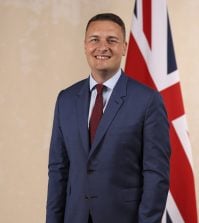UK tax authority rejects Government Digital Service ID system

HM Revenue & Customs (HMRC), the UK’s tax authority, has confirmed it is to develop a dedicated identity verification system for its online users – sparking a debate over why it isn’t adopting the Government Digital Service’s ‘Verify’ system, which was developed to provide a single ID-checking system for service users across government.
The new solution will replace Government Gateway, the current system used by HMRC for authenticating the identity of individuals, businesses and agents that use its online services.
According to HMRC, Government Gateway currently has 50 million active account users but is due to be phased out in March 2018.
Earlier this week, HMRC confirmed that rather than transferring to Verify, the user authentication system developed by the UK’s pioneering Government Digital Service (GDS) and widely used by other departments, HMRC will replace Government Gateway with its own new system.
In a blog post announcing the move, Mike Howes-Roberts, the HMRC programme director responsible for replacing the Government Gateway, wrote: “There is much the current Government Gateway service does well and we’ll be looking to take forward into a new solution. But we also know we can provide a more agile, flexible and secure set of services, and at lower cost.”
Howes-Roberts said HMRC is also “exploring options” around other government departments using the new system in certain circumstances.
“This would be restricted to business and agent-facing services only as Cabinet Office requires all other departments to use Verify: the cross-government service for any citizen-facing services where customers need to prove their identity,” Howes-Roberts said.
Few further details of the new system were given, but Howes-Roberts said he wants an “honest and candid dialogue” with other departments.
HMRC’s move already appears to have sparked a lively debate about why it is pursuing its own system and not moving to Verify, with digital government experts taking to social media this week to question the department’s motives.
Stephen Foreshew-Cain, the former executive director of the GDS, wrote on Twitter: “Looking forward to the FOI [Freedom of Information] requests regarding IT Spend Controls on how much and since when HMRC have been developing a competing ID solution.”
Ed Blackburn, an independent software engineer, tweeted the text of an as-yet unpublished comment he left on Howes-Roberts’ blog post, in which Blackburn criticised HMRC for not providing any justification of its decision.
“You’ve completely neglected to inform why HMRC requires a different solution to the rest of GOV.UK and why I as a customer will require two identities for accessing govt services?”
“Siloing HMRC from Cabinet Office on the face of it appears to be an expensive additional feature for third parties to implement… All of which without adequate explanation looks to be unecessary.”
But support for Verify appears to be far from universal, with observers pointing out that the system as it stands does not cater to HMRC’s target users.
User experience consultant Harry Brignull tweeted: “HMRC’s main issue with Verify has always been that it is only intended for individuals to use, whereas Gateway also offers ID assurance for businesses and intermediaries (such as accountants who file tax returns on behalf of clients). GDS has stubbornly refused to expand Verify for use by organisations as well as individuals – a decision that may prove to be a fatal flaw.”
Global Government Forum understands that GDS did consider extending Verify to cover business users, but ran into problems over providing the graduated access required by multiple users within each business and later shifted resources to other projects seen as more pressing.
Verify also has a much smaller user base than the Government Gateway, having attraced only 1.1 million account users since its 2014 launch, according to government figures.
A digital government transformation strategy for the UK published last week said the government wants to get 25 million users signed up to Verify by 2020.
For up to date government news and international best practice follow us on Twitter @globegov
See also:
Mike Bracken, former head of the Government Digital Service (GDS): Exclusive interview




















